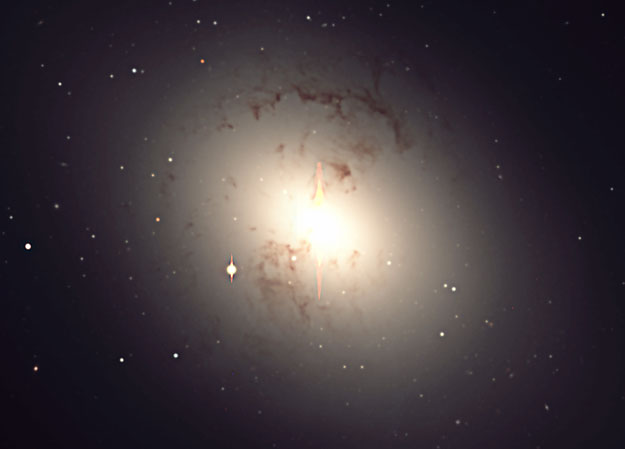Explanation: Can unusual giant galaxy NGC 1316 help calibrate the universe? Quite possibly -- if it turns out this atypical galaxy is composed of typical stars. NGC 1316, pictured above, is most obviously strange because it has a size and shape common for an elliptical galaxy but dust lanes and a disk more commonly found in a spiral galaxy. These attributes could be caused by interactions with another galaxy over the past billion years. Most recently, NGC 1316 has been monitored to find novae, explosions emanating from white dwarf stars that should have a standard brightness. Again, NGC 1316 was found atypical in that the nova rate was unexpectedly high. If, however, the stars and white dwarfs that compose NGC 1316 are typical, then the novae observed should be just as bright as novae in other galaxies so that astronomers can use them to compute an accurate distance. This distance can then be used to calibrate other distance indicators and result in a more accurate scale for distances throughout the universe.
1999 2000 2001 2002 2003 2004 2005 2006 2007 2008 2009 2010 2011 2012 2013 2014 2015 2016 2017 2018 2019 2020 2021 2022 2023 2024 2025 |
Yanvar' Fevral' Mart Aprel' Mai Iyun' Iyul' Avgust Sentyabr' Oktyabr' Noyabr' Dekabr' |
NASA Web Site Statements, Warnings, and Disclaimers
NASA Official: Jay Norris. Specific rights apply.
A service of: LHEA at NASA / GSFC
& Michigan Tech. U.
|
Publikacii s klyuchevymi slovami:
unusual - nova - NGC 1316 - Galaktika - novye zvezdy
Publikacii so slovami: unusual - nova - NGC 1316 - Galaktika - novye zvezdy | |
Sm. takzhe:
Vse publikacii na tu zhe temu >> | |
